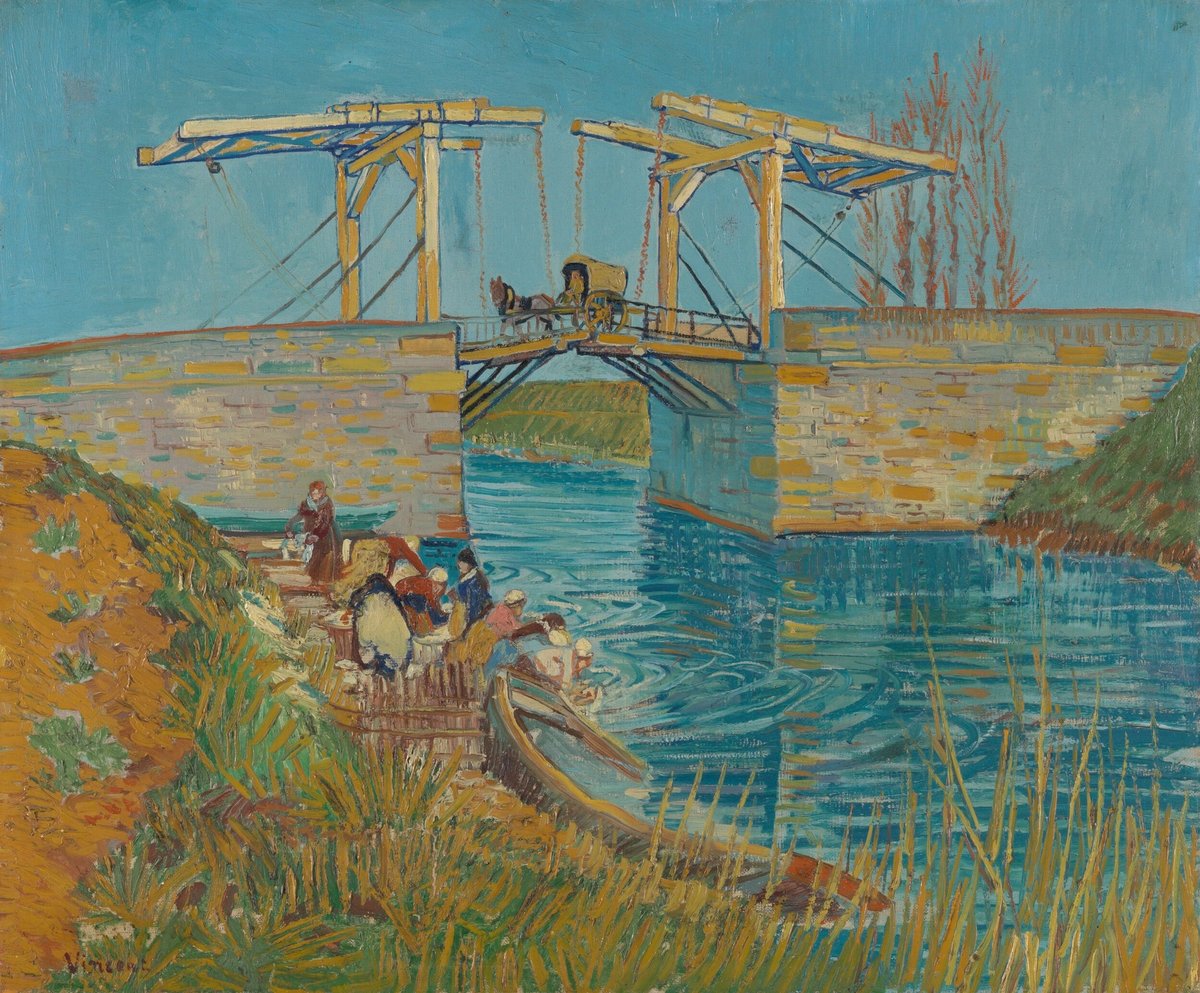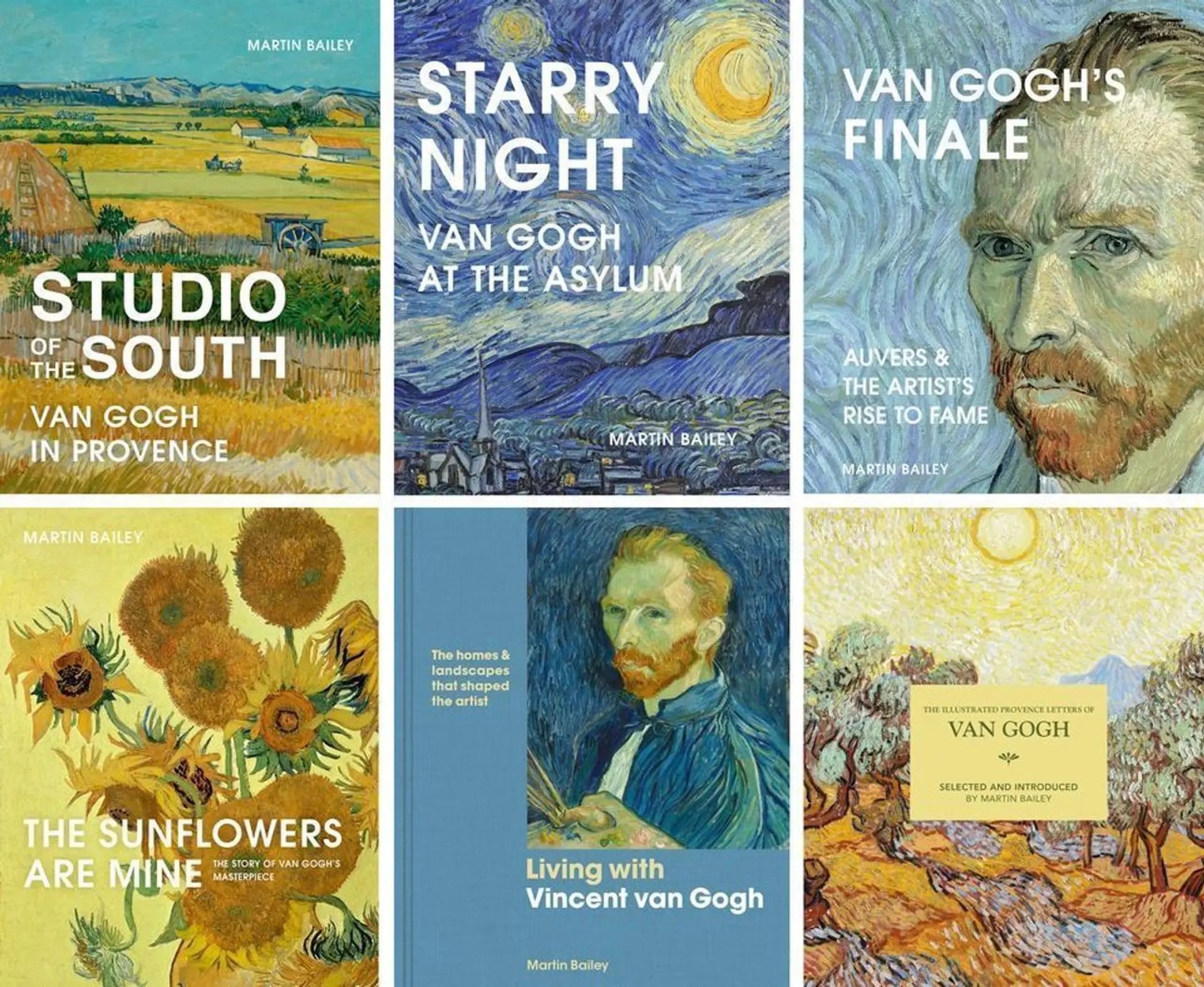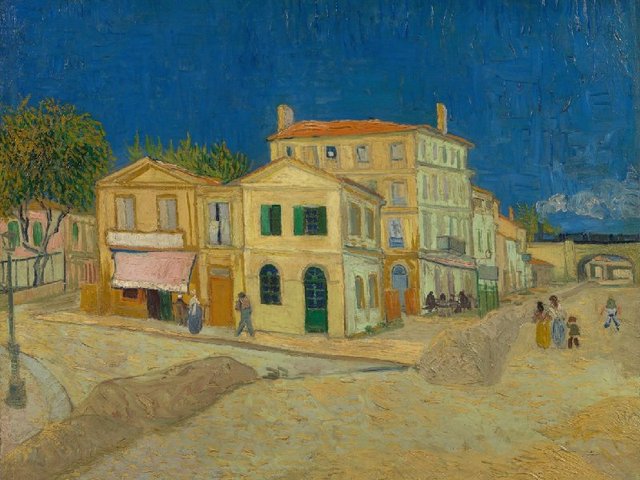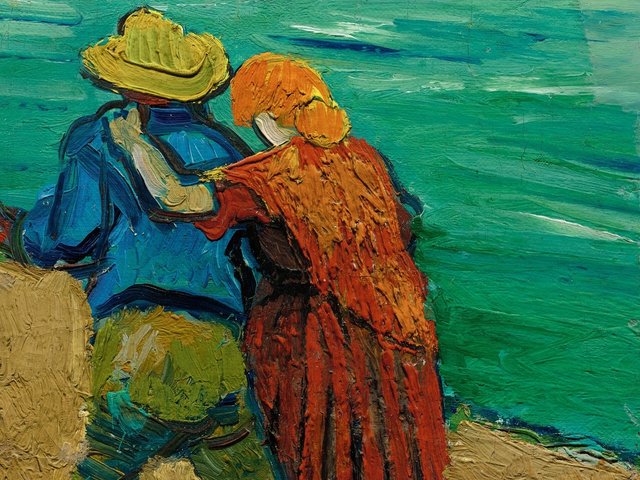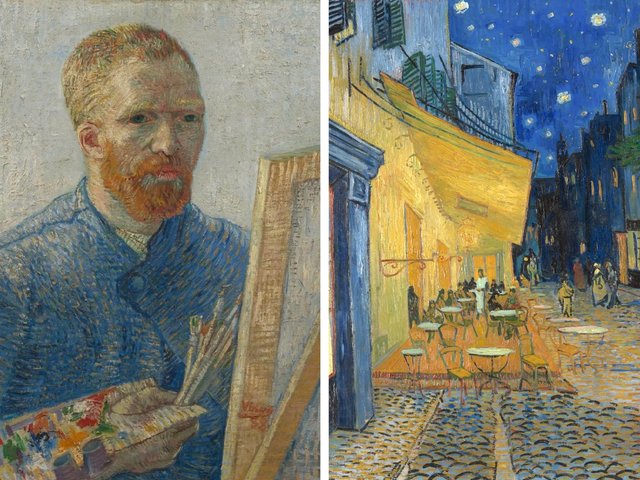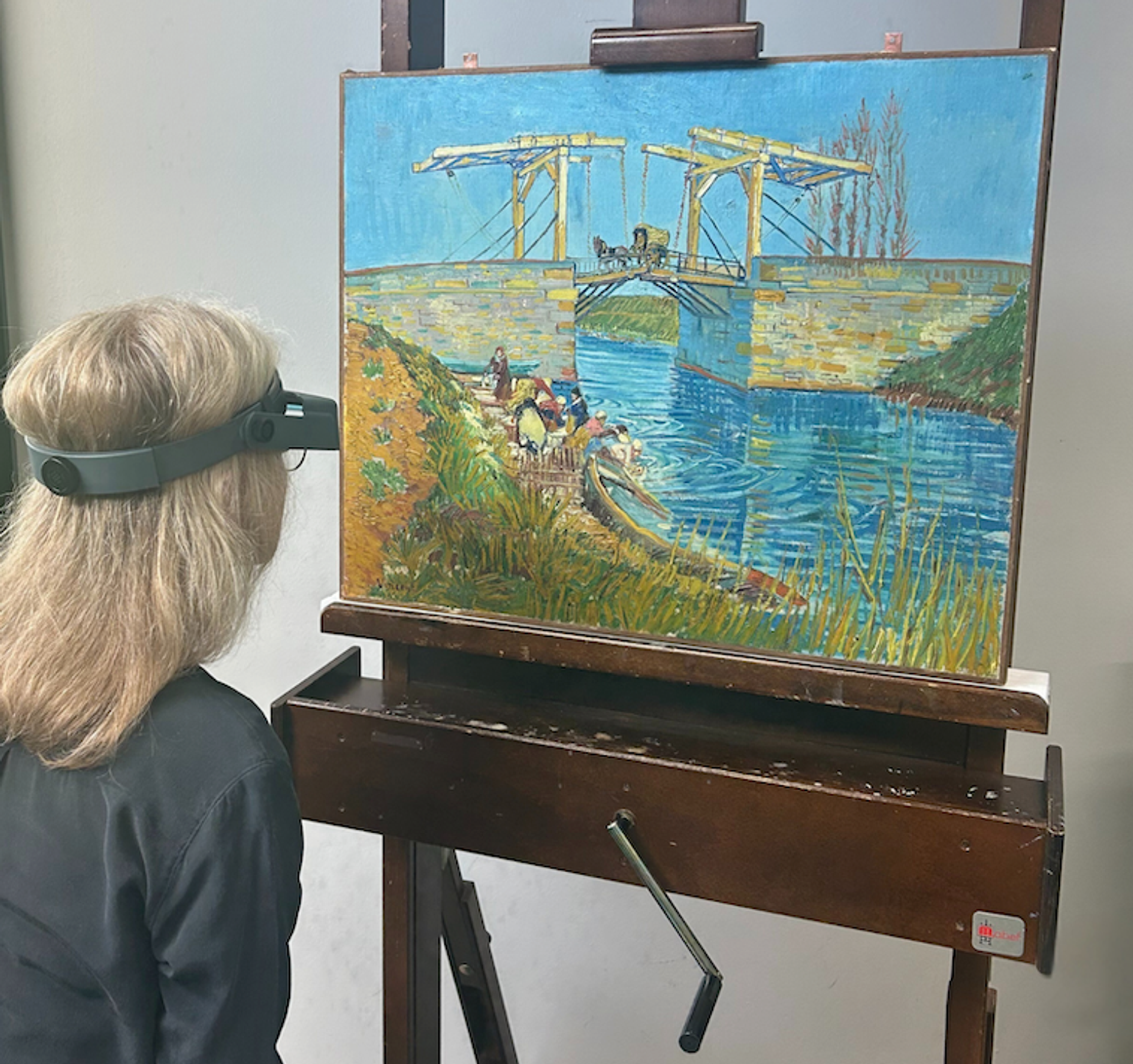
Conservator Margje Leeuwestein examining Bridge at Arles at the Kröller-Müller Museum
Kröller-Müller Museum, Otterlo
Van Gogh’s Bridge at Arles (Pont de Langlois) has just been examined in the Kröller-Müller Museum’s conservation studio, to confirm that it is in good enough condition to travel to an exhibition in Japan. It will be the centrepiece of a show that is to be presented in three Japanese cities in 2027.
Bridge at Arles (March 1888) was one of the first landscape paintings done by Van Gogh after his arrival in Provence. The Dutch-style wooden drawbridge, in the south-west outskirts of Arles, must have brought back memories of his youth in the Netherlands. In the painting, a group of washerwomen work by the canal that runs south from Arles to the Mediterranean.
Vincent described the picture in a letter to his brother Theo: “It’s the drawbridge with a little yellow carriage and group of washerwomen, a study in which the fields are a bright orange, the grass very green, the sky and the water blue.”
By now, Van Gogh had become highly skilled in his use of colour, particularly complementary tones: the powerful blue sky and contrasting yellow drawbridge in the upper half of the painting; the orange earth and green grass in the lower-left corner.
Pleased with Bridge at Arles, Van Gogh planned to send it as a personal gift to Hermanus Tersteeg, the long-serving head of the Goupil gallery in The Hague. Van Gogh had known him since 1869, when as a 16-year-old assistant he had been working for Tersteeg.
Nearly 20 years later, Tersteeg was still with Goupil in The Hague and Van Gogh thought that the gallery might be able to sell his art. Seeking his support, Van Gogh added a dedication to Tersteeg on the painting, just above his signature.

A much-enlarged detail of Van Gogh’s Bridge at Arles with his signature and the bare patch above it where the dedication to Tersteeg had been scraped off
Kröller-Müller Museum, Otterlo
For some unknown reason, the landscape picture never reached Tersteeg and someone later scraped off the dedication. The picture remained with Theo and his widow Jo Bonger sold it in 1897. It was later acquired by Helene Kröller-Müller in 1912.
A rare photograph, unpublished in the Van Gogh literature, depicts the Pont de Langlois in 1929, shortly before it was replaced. It was taken by Johannes Reiher (1893-1981), a German amateur photographer and art collector. It was spotted by one of readers, Yuri Pikul, a Ukrainian artist based in Kyiv. Reiher must have had Van Gogh’s painting in mind, staging the photograph with a horse and cart crossing the middle of the bridge.
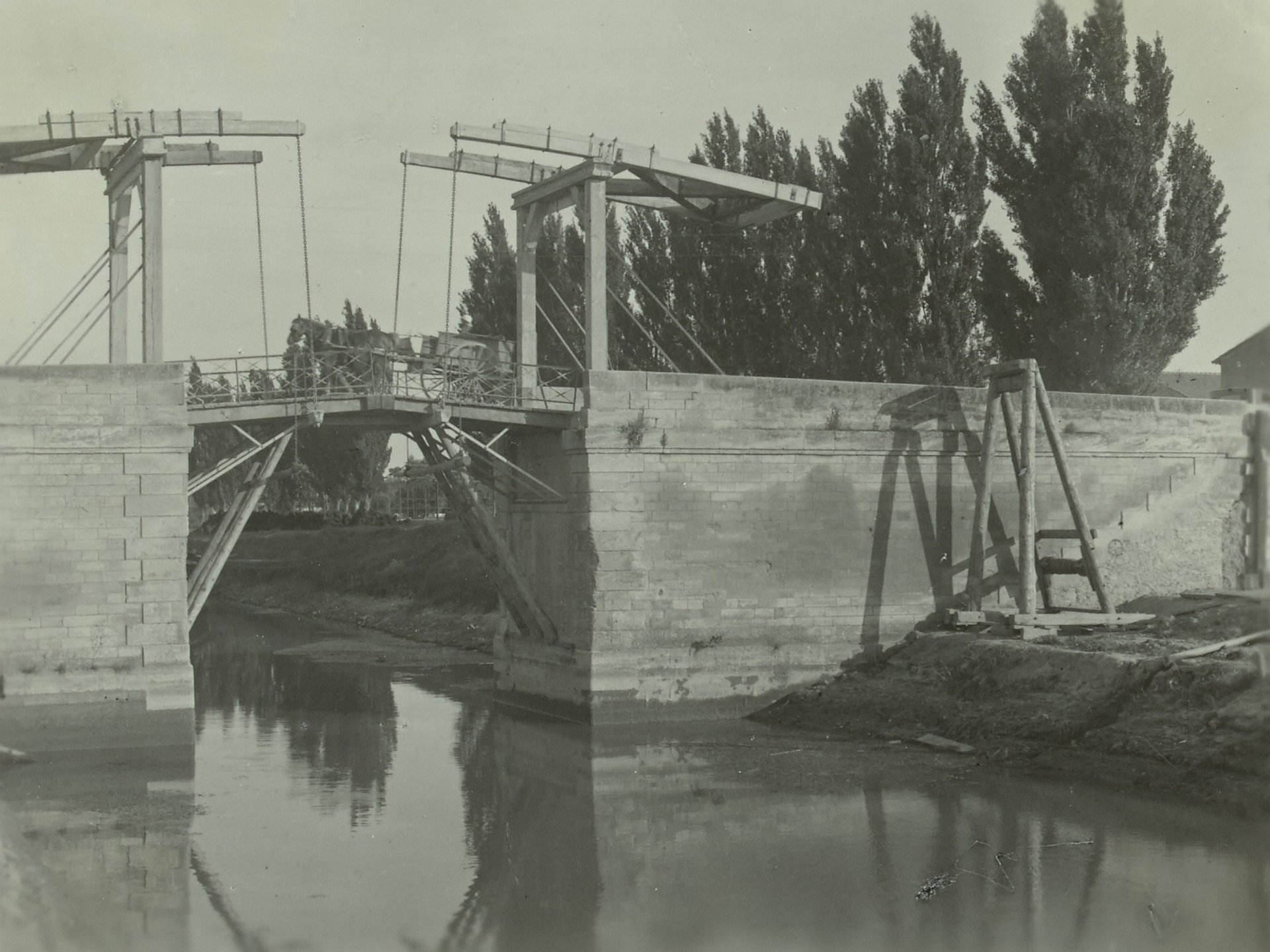
Johannes Reiher’s photograph Arles Canal Bridge (1929)
Deutsche Fotothek, Dresden (inventory 70030596)
Little had changed in the nearly 40 years between Van Gogh’s painting and Reiher’s photograph. Additional struts had been added to the lower part of the bridge, to strengthen it, and Van Gogh’s five poplar trees had become a denser group.
In his letters Van Gogh called the bridge the “Pont de l’Anglais” (the Englishman’s Bridge). However, Van Gogh specialists have since corrected him, identifying it as the Pont de Langlois, which was apparently named after the canal employee responsible for it. But during the late-19th century some written sources do refer to the bridge as the Pont de l’Anglais, so Van Gogh was not incorrect.
After his first work, Van Gogh went on to complete three more paintings of the bridge, alongside four drawings and a watercolour—evidence that it was an important motif for him. One of the paintings is now at Amsterdam’s Van Gogh Museum, another is at Cologne’s Wallraf-Richartz Museum & Fondation Corboud and the third is in a private collection. There was also a fifth painting of the Langlois Bridge which was almost entirely discarded by the artist because he was dissatisfied with it, leaving just a surviving fragment depicting a pair of lovers who were strolling by the canal.
Although the Langlois Bridge itself was dismantled in 1931, there is now a “Van Gogh Bridge”, erected for the benefit of tourists. Nearly all the remaining original bridges on the canal were destroyed during the Second World War, although one survived at the port of Fos-sur-Mer. It was dismantled and reinstalled near Arles in 1962 to echo the scene in Van Gogh’s paintings. But it was not re-erected where the Langlois Bridge once stood, instead it is nearly three kilometres out of town.
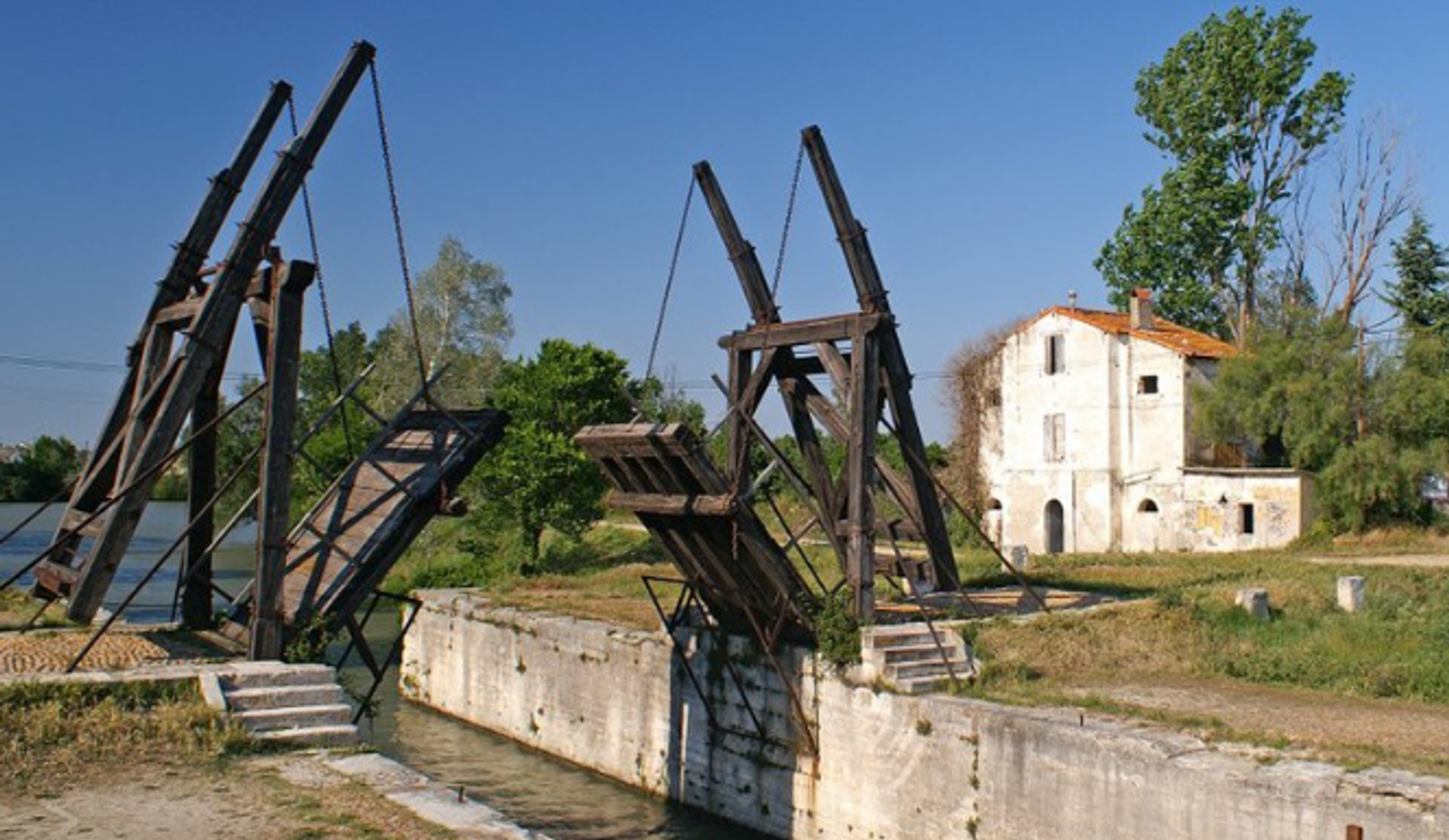
The “Van Gogh Bridge”, which was re-erected outside Arles in 1962
Via Wikimedia Commons
Meanwhile plans are going ahead in Japan for The Grand Van Gogh Exhibition, with a large group of works on loan from the Kröller-Müller Museum. Bridge at Arles will be the lead painting. The show is scheduled to open at the Kobe City Museum (February–May 2027) and then go on to the Fukushima Prefectural Museum of Art (June-September 2027) and Tokyo’s Ueno Royal Museum (October 2027–January 2028).
Until then, Bridge at Arles will remain on display at the Kröller-Müller Museum in Otterlo, in the east of the Netherlands.


